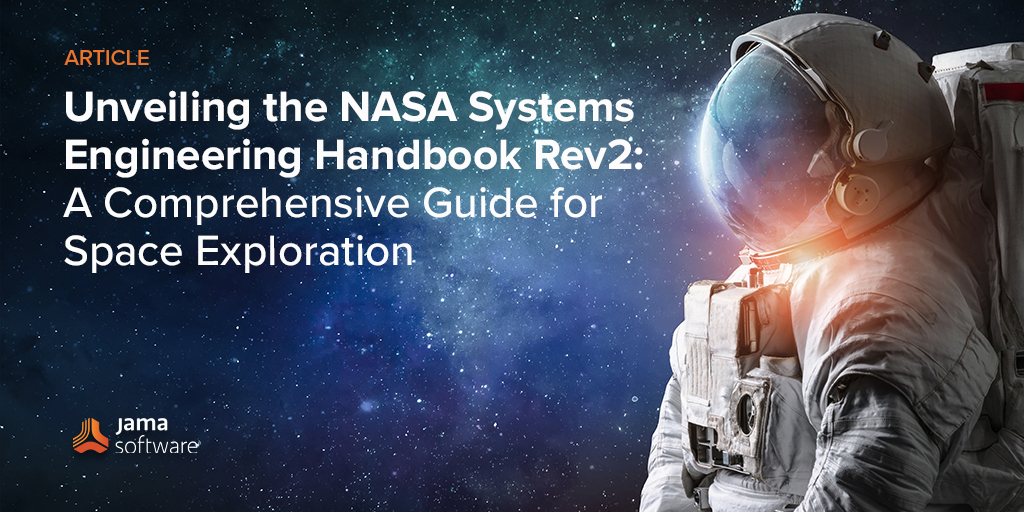
Unveiling the NASA Systems Engineering Handbook Rev2: A Comprehensive Guide for Space Exploration
NASA, the National Aeronautics and Space Administration, has been at the international forefront of space exploration for decades, pushing the boundaries of human knowledge and expanding our understanding of the universe. Behind every successful NASA mission lies a robust framework of engineering practices and principles, which are meticulously documented and compiled in the NASA Systems Engineering Handbook Rev2. In this blog post, we will delve into the key aspects of this handbook, exploring its purpose, contents, and the diverse range of professionals who rely on it.
Understanding the NASA Systems Engineering Handbook Rev2
The NASA Systems Engineering Handbook Rev2, also known as NASA/SP-2007-6105 Rev2, is a comprehensive guide that provides detailed insights into the principles, practices, and processes of systems engineering as applied to space missions. It serves as a valuable resource for engineers, scientists, project managers, and other professionals involved in the planning, development, and execution of NASA missions.
In comparison to NASA Systems Engineering Handbook Rev1, which was published in 1995, Rev2 is a modernized version that aligns with current practices, incorporates lessons learned from recent NASA missions, and integrates more current technologies and tools to enhance system development and management.
RELATED: [Webinar Recap] Launch Your Aerospace & Defense Product Development Processes with Jama Connect®
Purpose and Objectives
The primary objective of the handbook is to promote effective systems engineering practices within NASA and its associated programs. It outlines a standardized approach to managing complex projects and ensures that all aspects of engineering are considered throughout the lifecycle of a mission. By adhering to the guidelines presented in the handbook, NASA aims to enhance mission success rates, mitigate risks, and optimize resource utilization.
Contents and Key Topics
The NASA Systems Engineering Handbook Rev2 covers a wide range of topics, providing a holistic view of the systems engineering discipline. Some of the key areas addressed in the handbook include:
- Introduction to Systems Engineering: This section provides an overview of systems engineering principles, concepts, and the overall engineering process. It lays the foundation for understanding the subsequent chapters and their relevance to space missions.
- Systems Engineering Processes: Here, the handbook outlines the various processes involved in systems engineering, such as requirements development, design, verification, validation, and risk management. It emphasizes the importance of a structured and iterative approach to achieve mission objectives.
- Systems Engineering Management: This chapter focuses on the management aspects of systems engineering, including organization structures, roles and responsibilities, and project planning and control. It provides guidance on effectively managing interdisciplinary teams and fostering collaboration.
- Systems Engineering Tools and Techniques: The handbook explores the tools and techniques commonly employed in systems engineering. It covers areas like modeling and simulation, trade studies, configuration management, and system integration and testing. These tools facilitate informed decision-making and ensure the successful integration of complex systems.
- Systems Engineering and NASA Programs: This section discusses the application of systems engineering within various NASA programs, highlighting the specific challenges and considerations associated with each program. It encompasses areas such as human spaceflight, robotic exploration, Earth science missions, and astrophysics.
RELATED: Aerospace & Defense PLM Action Group Digital Thread Collaborative Research Report
Users of the NASA Systems Engineering Handbook Rev2
The NASA Systems Engineering Handbook Rev2 is an invaluable resource for a wide range of organizations involved in space exploration system development. The following are some key users of this handbook:
- Engineers and Scientists: Systems engineers, aerospace engineers, and scientists working on NASA projects rely on the handbook for guidance on best practices, processes, and techniques. It provides them with a standardized approach to system development, ensuring consistency across missions.
- Project Managers: The handbook offers project managers a comprehensive understanding of systems engineering principles. It assists them in establishing project plans, managing risks, and coordinating activities across multidisciplinary teams.
- Academia and Research Institutions: The NASA Systems Engineering Handbook Rev2 is widely used as a reference in academic and research institutions. It serves as a guide for students, researchers, and professors involved in space-related studies and projects.
- Industry Professionals: Engineers and professionals working in the aerospace industry often refer to the handbook as a benchmark for best practices. It helps them align their methodologies with NASA’s standards, enabling seamless collaboration with the agency on joint projects.
Conclusion
The NASA Systems Engineering Handbook Rev2 stands as a testament to NASA’s commitment to excellence in space exploration. By encapsulating the best practices and experiences from numerous successful missions, this updated comprehensive guide empowers engineers, scientists, project managers, and other professionals involved in NASA programs. With its emphasis on a structured approach to system development, risk management, and interdisciplinary collaboration, the handbook plays a pivotal role in ensuring the success and safety of future space missions.
Note: This article was drafted with the aid of AI. Additional content, edits for accuracy, and industry expertise by Decoteau Wilkerson and Cary Bryczek.
- [Webinar Recap] The New ARP4754B: Tips for Engineers & Quality Teams - December 30, 2024
- [Webinar Recap] Elevating MBSE with SysML: Jama Connect® and CATIA Magic in Action - September 17, 2024
- SysML is Not Enough: Why You Still Need a Requirements Management Tool - July 18, 2024